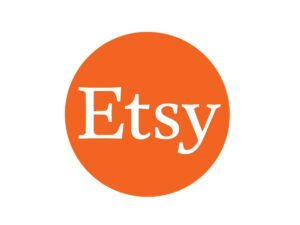Step#1 Understanding the Online Jewelry Market
The online jewelry market isn’t just about selling ornate pieces; it encapsulates consumer behavior, market trends, and potential growth areas. According to Global Newswire, the jewelry market was worth USD 256 billion in 2021 and is projected to reach over USD 517 billion by 2030, with a CAGR of 8.25%. This impressive growth rate indicates a booming market with vast potential.
I’ve witnessed many businesses flourish when they truly understand the market they’re venturing into. Moreover, understanding the market’s geography can pinpoint where the audience resides. Cultural nuances play a massive role in jewelry preferences, so targeting based on these insights can lead to better conversions. Remember, jewelry isn’t just an accessory; it’s a statement of personality and culture.

Step#2 Business Planning and Strategy
At its core, business planning and strategy entails establishing distinct objectives and discerning methods to accomplish them. This process is vital for directing a brand toward its envisioned trajectory and guaranteeing that each decision corresponds with overarching aspirations. A business strategy offers clarity in uncertainty and provides a clear roadmap to follow. Here are the steps to initiate a business plan and strategy:
-
Objective setting: Define clear, measurable goals for the online jewelry store. A business without a clear aim can get lost in the vastness of the digital market.
-
Competitive analysis: Understand the strengths and weaknesses of the competitors. For instance, identify a
unique selling proposition (USP) they might have overlooked. This analysis isn’t just about finding gaps in their armor, but it also aids in understanding market expectations.
-
Brand identity development: Create a memorable brand name, logo, and story. This not only sets the business apart but also resonates emotionally with the target audience, fostering loyalty.
-
Budget allocation: Financial planning is crucial. Allocate budgets for inventory, marketing, platform charges, and unforeseen expenses. From my experience, a well-planned budget can be the difference between thriving and barely surviving. Money well spent is an investment, not a cost.
-
Digital marketing plan: Develop a multi-platform strategy that includes social media promotion, search engine optimization (SEO), and email marketing. Engaging content, like behind-the-scenes looks or jewelry care tips, can captivate audiences.
By meticulously planning and strategically implementing these elements, businesses can establish a strong foundation for the online jewelry business, ensuring its growth and sustainability in the competitive marketplace.

Step#3 Legalities and Regulations
Legalities and Regulations serve as essential guidelines for business operations and protect against possible legal issues. While these can be crucial for the longevity and stability of a business, many entrepreneurs neglect them. Proper assistance can make the process of understanding these laws more straightforward. Here are some primary examples:
Legalities
-
Intellectual property rights (e.g., patents, copyrights, trademarks).
-
Employment contracts and labor laws.
-
Business formation and structure (e.g., LLC, Corporation).
-
Privacy policies and data protection.
-
Mergers and acquisitions legal considerations.
Regulations
-
Industry-specific safety standards.
-
Environmental protection guidelines.
-
Licensing and permits for specific business activities.
-
Trade and import/export regulations.
-
Advertising and marketing standards.
| Consideration |
Description |
Why It Matters |
| Business Registration |
Registering the jewelry business as an appropriate entity (e.g., sole proprietorship, LLC, corporation). |
Establishes the business’s legal structure and determines tax implications and liabilities. |
| Licenses & Permits |
Securing necessary local, state, or national licenses and permits to operate a retail store, workshop, or online platform. |
Ensures legal operation and avoids potential fines or shutdowns. |
| Sales Tax Collection |
Understanding the requirements for collecting and remitting sales tax, especially if selling online to various states or countries. |
Compliance with tax authorities and avoidance of legal repercussions. |
| Import/Export Regulations |
If sourcing materials or selling internationally, being aware of customs regulations, duties, and tariffs. |
Avoids customs issues, delays, and unexpected costs. |
| Hallmarking & Quality Standards |
Ensuring jewelry meets quality standards, like hallmarking gold or silver pieces to indicate purity. |
Ensures trustworthiness and authenticity, and complies with quality regulations in many countries. |
| Intellectual Property |
Securing copyrights, patents, or trademarks for unique jewelry designs, brand logos, and other intellectual assets. |
Protects business assets from being copied or misused by competitors. |
| Ethical Sourcing Regulations |
Adhering to regulations and certifications (like the Kimberley Process for diamonds) that ensure materials are ethically sourced. |
Upholds the business’s ethical standards and ensures trust with consumers. |
| Consumer Protection Laws |
Complying with laws that protect consumers, such as providing accurate product descriptions, clear return policies, and ensuring data protection. |
Protects consumers and builds trust, while also avoiding legal disputes or fines. |
| Insurance |
Securing insurance coverage for potential risks (e.g., theft, damage, liability). |
Protects the financial health of the business against unforeseen events. |
| Online Selling Regulations |
If selling online, understanding digital transaction regulations, data protection laws, and online advertising standards. |
Ensures smooth online operations and compliance with e-commerce legalities. |
Step#4 Choosing a Platform
Starting an online jewelry business necessitates the selection of an appropriate platform, which will serve as the digital foundation for the venture. The right platform enhances visibility, ensures user-friendliness, and supports scalability. Crucially, the chosen medium should align with the business’s specific needs and offer features beneficial for jewelry sales. Here are some platforms to consider:
Shopify
A leading name in eCommerce, Shopify offers an intuitive interface complemented by a wide range of plugins and apps tailored for various businesses, including jewelry. Its robust security features instill trust in potential buyers, though monthly fees and transaction costs are aspects to weigh.

Wix
A platform known for its drag-and-drop capabilities, Wix provides design flexibility, making it an attractive option for those aiming for distinct aesthetics. While it caters brilliantly to those without technical backgrounds, its scalability might be less suited for expansive enterprises.

BigCommerce
Priding itself on scalability, BigCommerce comes packed with built-in features that streamline online selling. While there are no transaction fees, businesses should note the platform’s annual sales limits for its pricing tiers and a slightly steeper learning curve. Having tried several platforms, I found BigCommerce to be incredibly adaptive for evolving businesses.

Etsy
Primarily catering to artisans, Etsy is a haven for handmade or unique jewelry pieces. It offers an easy setup and access to a large, built-in audience. However, sellers should be prepared for listing fees, transaction charges, and a highly competitive environment. From my experience, the community vibe on Etsy is something truly unparalleled.

Magento
A powerhouse in the eCommerce world, Magento is celebrated for its customization capabilities and scalability. Ideal for sizable enterprises, it offers a plethora of features. However, this platform does come with its own set of challenges, such as the need for technical expertise and potential hosting costs.

Step#5 Setting Up Your Online Store
Every store component should mirror the quality and commitment inherent in the jewelry crafting process. A thoughtfully designed store layout guides customers effortlessly through their purchase journey. Setting up an online jewelry store is an exciting endeavor that can be both profitable and creatively fulfilling. The following is a step-by-step guide to ensure a smooth launch:
-
Market research: Identify target audience, analyze competitors in the niche and determine price points and design preferences.
-
Domain & hosting: Choose a memorable domain name related to jewelry or the brand. Opt for reliable hosting with good uptime and customer service.
-
Platform selection: Platforms like Shopify, WooCommerce, and Magento are popular choices. Ensure the platform has customization options and integrated payment gateways.
-
Design & user experience: Opt for a clean, easy-to-navigate design that showcases the jewelry. Ensure mobile optimization as many customers will shop via smartphones.
-
Product listings: Use high-quality images with zoom functionality. Provide detailed descriptions including material, size, and care instructions.
-
Payment & security: Integrate trusted payment gateways like PayPal, Stripe, etc. Ensure that the website is SSL certified for secure transactions.
-
Regular updates: Continually add new designs. Engage customers with blogs, newsletters, and promotions.
Remember, the online space offers immense potential, but it’s also competitive. Stay updated with jewelry trends, continuously improve the online store, and focus on building a loyal customer base. Take note that passion combined with business acumen will pave the way for a successful online jewelry store.
Step#6 Sourcing and Crafting Your Jewelry
Delving into the Sourcing and Crafting of Jewelry offers insights into the origins and intricate processes that breathe life into each piece. Understanding these facets not only vouches for the quality and authenticity of the jewelry but also guarantees a responsible choice. It’s vital to consider the following:
-
Material origins: The source of gold, silver, or gemstones in the jewelry, ensuring materials like diamonds come from conflict-free zones.
-
Craftsmanship techniques: With Rexjewel’s legacy, their manufacturing techniques blend tradition with innovation, showcasing the dedication to the craft. Whether the jewelry is handcrafted using traditional methods or produced with modern machinery.
-
Ethical practices: The assurance that materials are ethically sourced, such as pearls from farms practicing sustainable aquaculture.
-
Artisanal expertise: The involvement of local artisans, helping in preserving traditional jewelry-making skills.
-
Quality checks: The rigorous processes in place to ensure the quality of the final product, from manual inspections to advanced quality control machinery.

Step#7 Inventory and Supply Chain Management
When launching an online jewelry business, inventory and supply chain management become paramount for smooth operations and satisfied customers. These two facets ensure that products are available, of high quality, and delivered promptly. Let’s delve deeper into these facets below:
Inventory Management:
Inventory management ensures that the online jewelry business always has the right products available for customers, without overstocking or running out. It involves meticulously tracking and managing every jewelry piece.
-
Detailed product cataloging: Every jewelry piece should be cataloged with precision. This means listing items with clear photos, along with descriptions detailing materials, dimensions, and other pertinent attributes. Proper cataloging not only aids sales but also ensures effective stock tracking.
-
Stock level monitoring: Regularly check stock levels to avoid shortages or overstocking. Using inventory management software can automate this process, sending alerts for re-ordering and keeping tabs on product movement, which is essential for forecasting demand.
-
Returns & exchanges: With online purchases, returns and exchanges are inevitable. Establish clear policies and ensure that returned items are inspected and appropriately categorized. Efficiently processing returns maintains customer trust and helps update inventory accurately.
Supply Chain Management:
In an online jewelry business, the supply chain is the backbone, ensuring that raw materials and products are sourced, crafted, and delivered efficiently.
-
Reliable suppliers: Build strong partnerships with trustworthy suppliers who can consistently provide quality materials. Rexjewel, as a revered supplier of jewelry, relies heavily on its network of dependable businesses to maintain its esteemed standards. Such associations ensure timely production and can significantly impact the business’s reputation and customer satisfaction.
-
Quality assurance: Every jewelry piece should meet a certain quality standard. Implement regular checks for both raw materials and finished products. Consistent quality not only retains customers but also solidifies the brand’s market standing.
-
Transparent communication: Maintain open and consistent communication channels with all supply chain partners. Regular updates regarding material availability, delivery times, or potential challenges ensure that the business can adapt quickly, keeping operations smooth and customers satisfied.

Step#8 Marketing and Promotion
According to Creatopy, a promotion strategy refers to the tactics and plans integrated into the marketing approach to boost the demand for the product or service. Effective marketing and promotion strategies are pivotal in molding the way customers view and engage with the brand. To get a clearer picture, here are some prime examples:
Marketing Platforms
-
Social Media channels (e.g., Facebook, Instagram, LinkedIn)
-
Email Campaigns
-
Content Marketing (e.g., Blog posts, eBooks)
-
SEO (Search Engine Optimization)
-
Pay-per-click advertising (e.g., Google Ads)
Promotion Platforms
-
Online Giveaways (e.g., on social media platforms)
-
Loyalty Programs
-
Affiliate Marketing
-
Influencer Collaborations
-
Sponsored Content on platforms like YouTube or Podcasts.

Step#9 Scaling Your Jewelry Business
According to Global Newswire, the global jewelry market was worth USD 256 billion in 2021 and is set to hit USD 517.27 billion by 2030. In light of this growth, elevating the jewelry business demands strategic insight. Explore the essential steps:
-
Product diversification: Start by introducing new lines or collections that cater to different demographics or occasions. This not only helps in reaching a broader audience but also positions the brand as versatile and comprehensive. Continuously study market trends and customer feedback to identify potential product expansions.
-
Digital expansion: This involves optimizing the website for search engines, actively engaging in social media, and investing in digital advertising. Collaborations with influencers or bloggers can also amplify reach and credibility.
-
Attend trade shows & exhibitions: By showcasing the products at jewelry exhibitions and trade shows, it can establish industry connections, gain direct customer feedback, and expand brand awareness. Such events often lead to bulk orders and open doors to international markets.
-
Optimize supply chain: As demand grows, ensuring consistent quality and timely delivery becomes crucial. Streamline the supply chain by forging strong relationships with reliable suppliers, implementing inventory management systems, and possibly diversifying sources to mitigate risks.
-
Implement customer loyalty programs: Rewarding repeat customers can enhance brand loyalty and drive consistent sales. Offering exclusive discounts, early access to new collections, or loyalty points can motivate customers to keep coming back and referring others.
Scaling a jewelry business requires a combination of strategic planning, investment in resources, and a relentless focus on quality and customer satisfaction. As the market evolves, staying agile and responsive to changes will be key to sustained growth.
Dive Deeper Into Our Resources
Looking for more diverse product options? Browse through our handpicked selections:
For some insightful reads, we’ve curated a list of recommended articles just for you:
Still haven’t found what you’re looking for? Don’t hesitate to contact us. We’re available around the clock to assist you.
Conclusion
In conclusion, the success of an online jewelry business lies in thorough planning, market insight, and genuine customer relationships. Beyond glamour, a strategic and customer-focused approach drives a brand.
For those setting their sights on digital triumph in the jewelry realm, Rexjewel stands ready to illuminate your path. Contact us today, and let’s embark on your radiant odyssey together.











